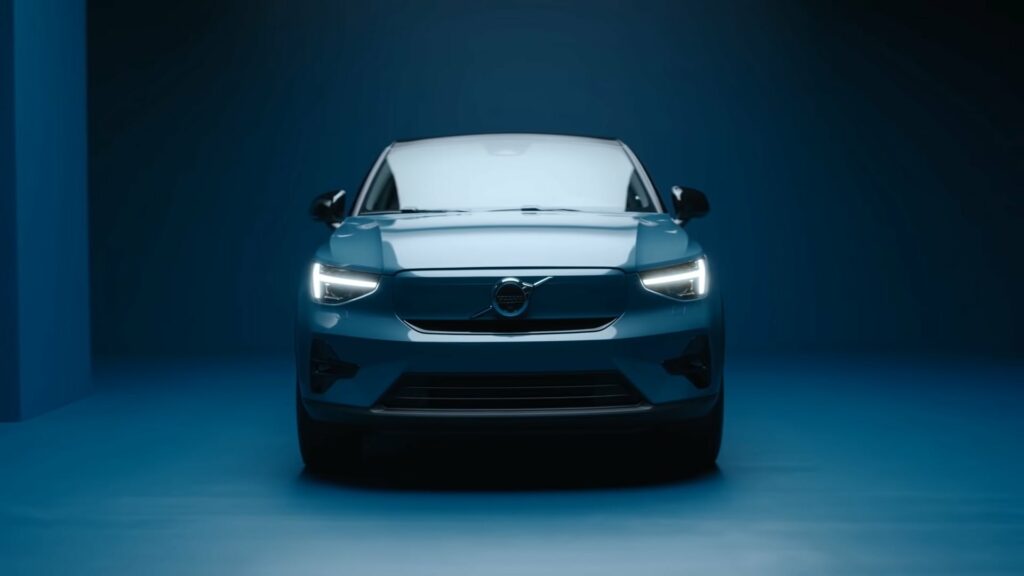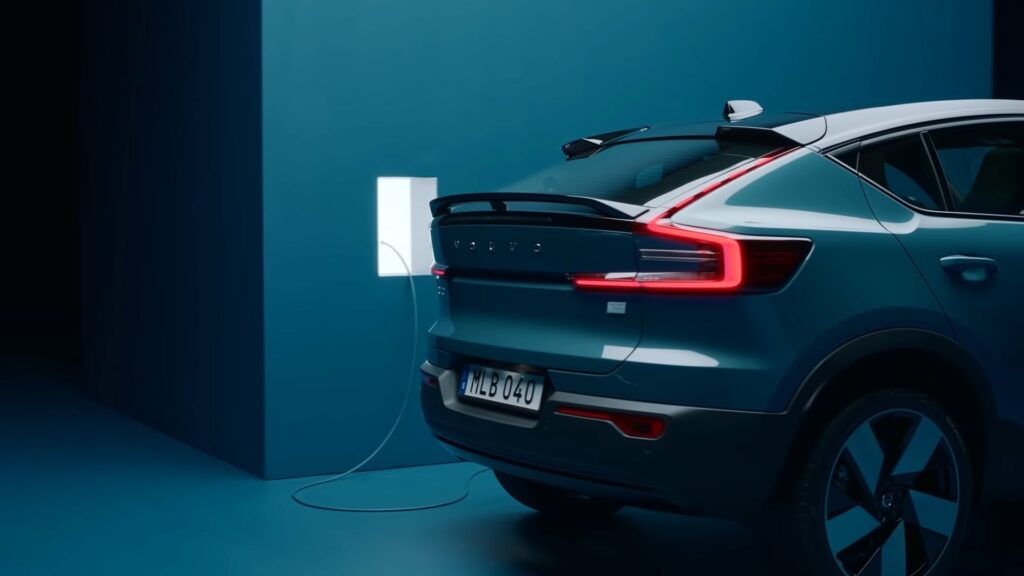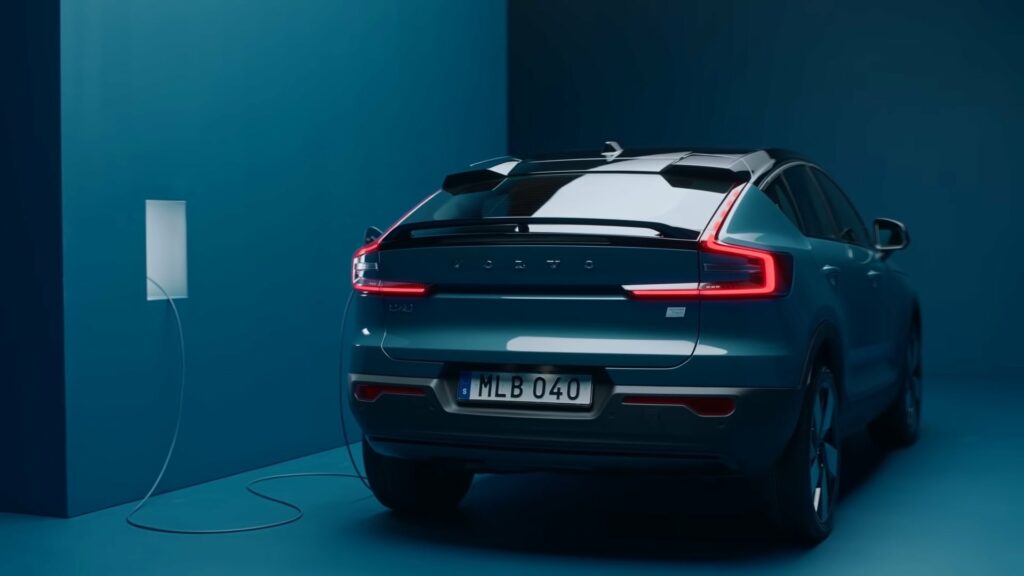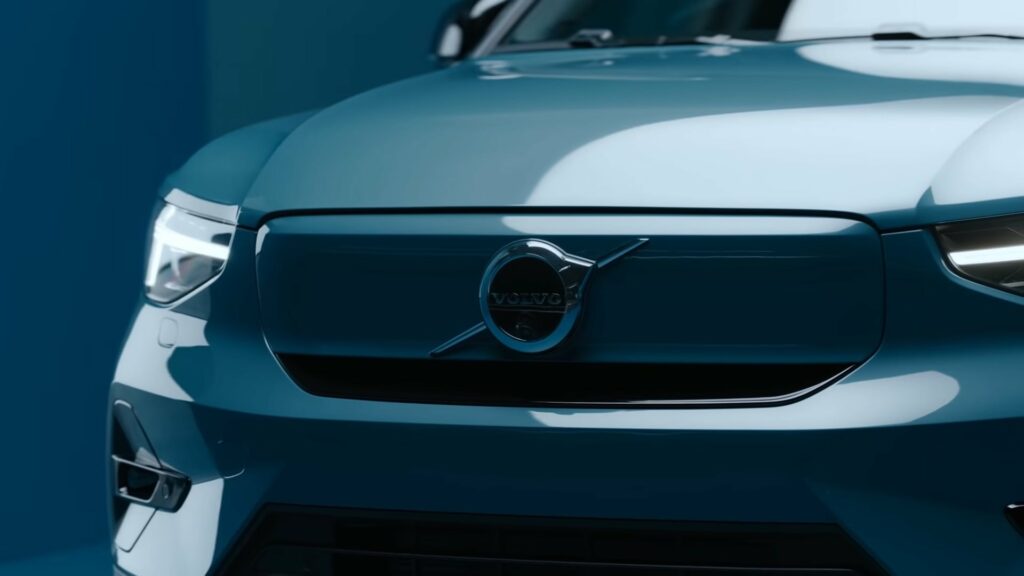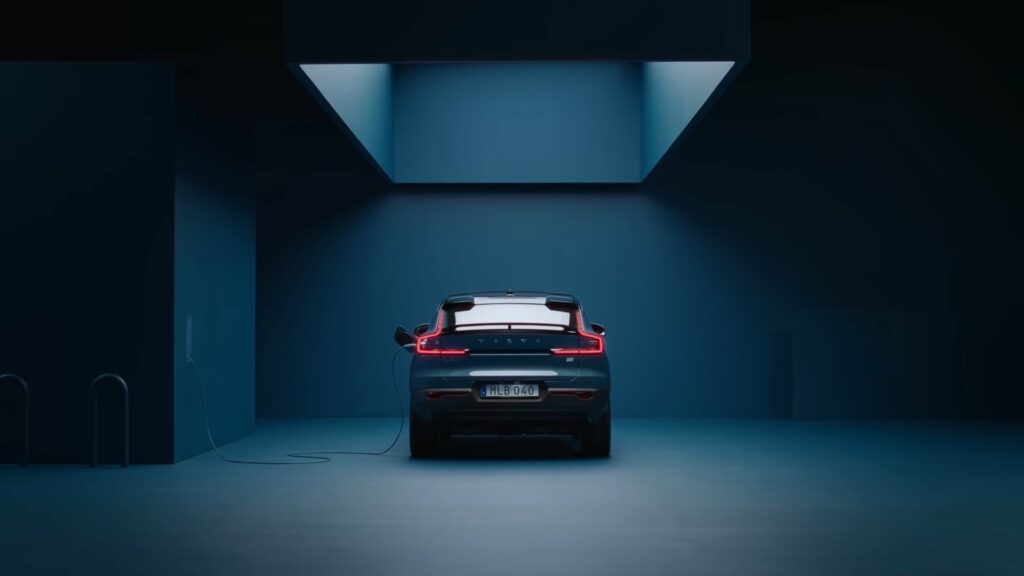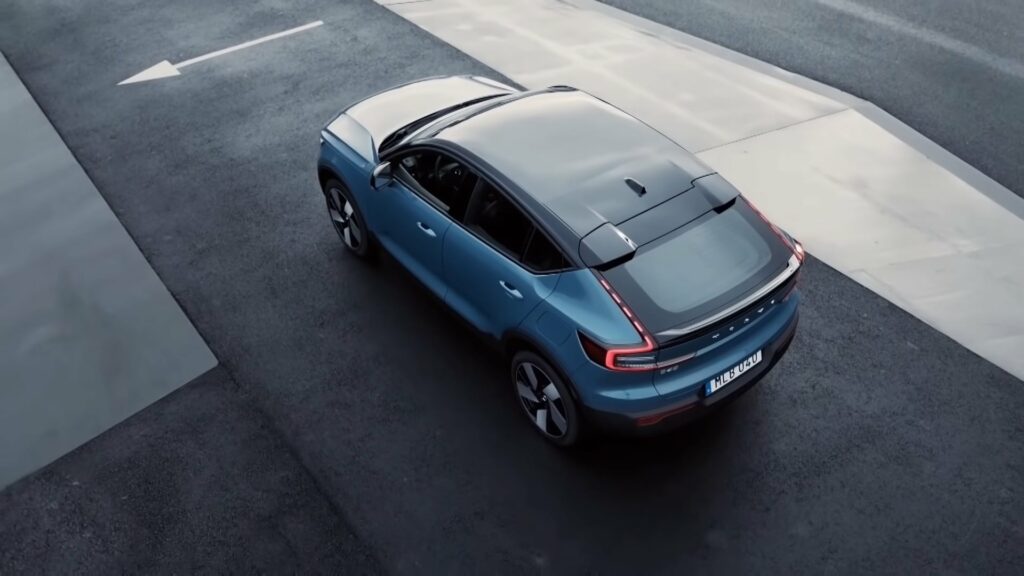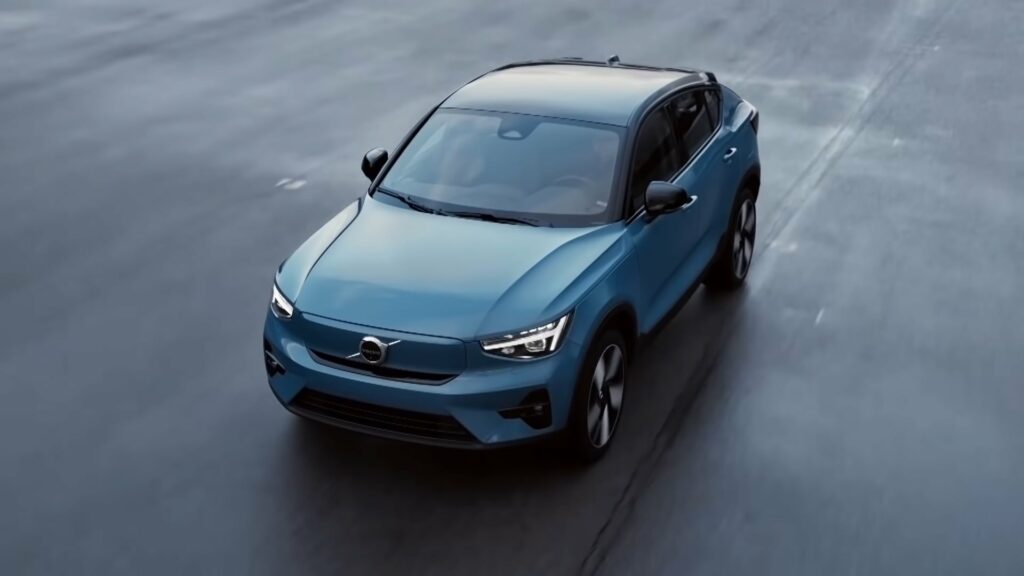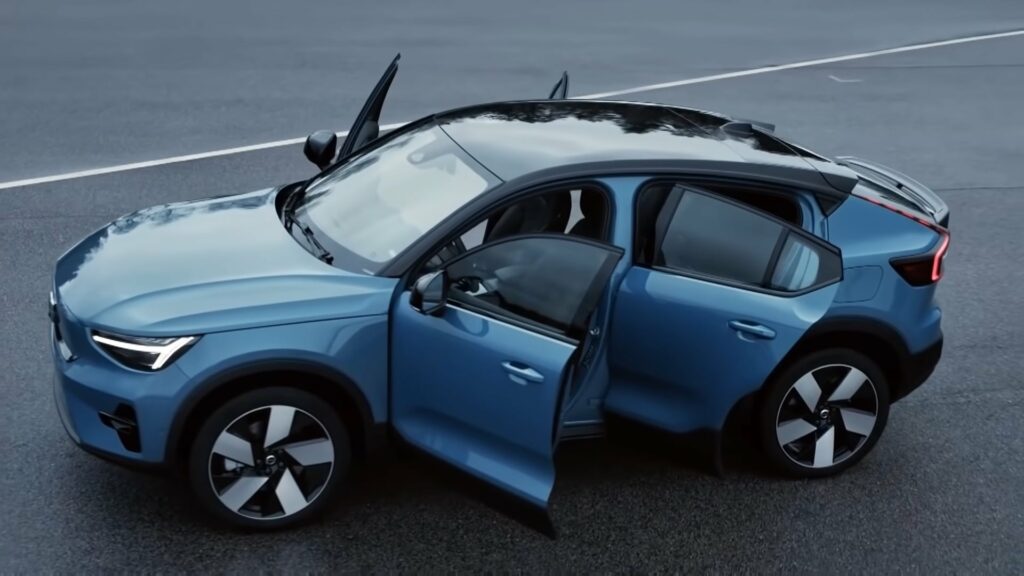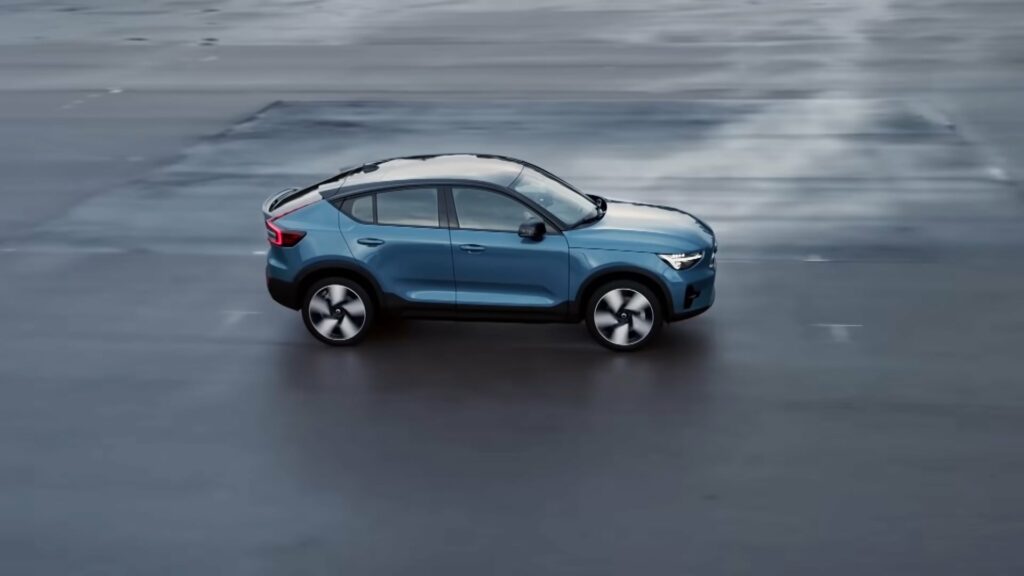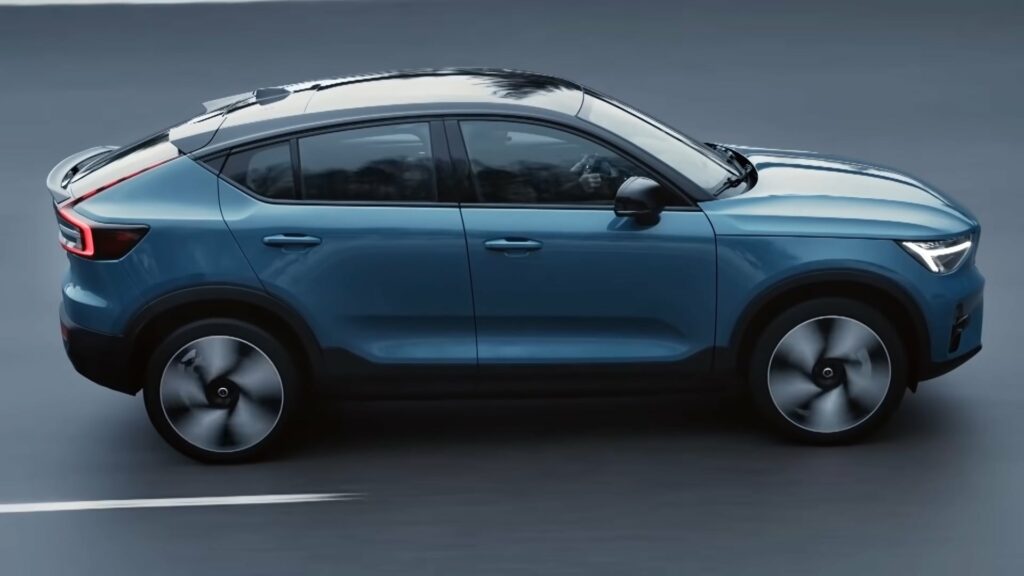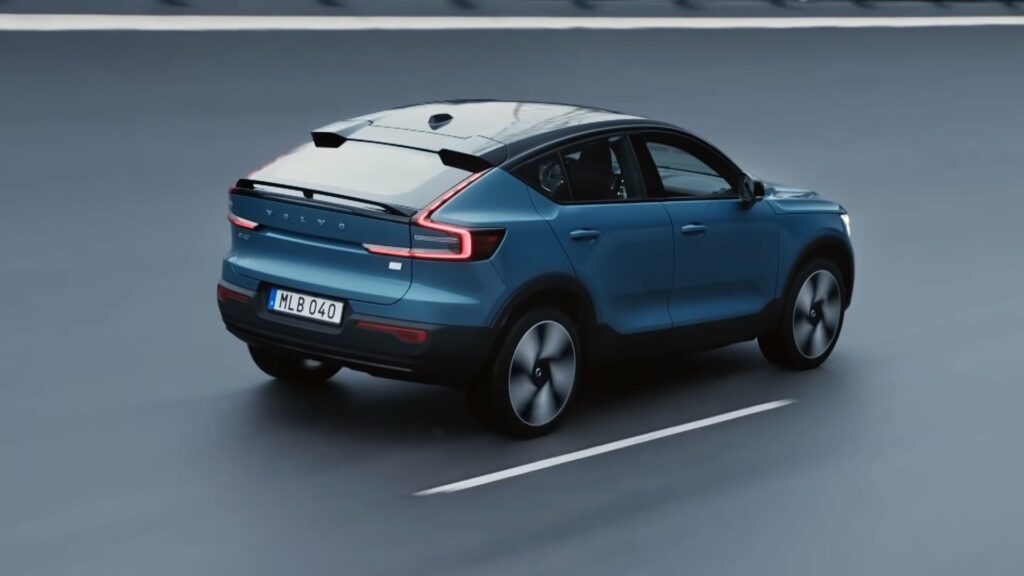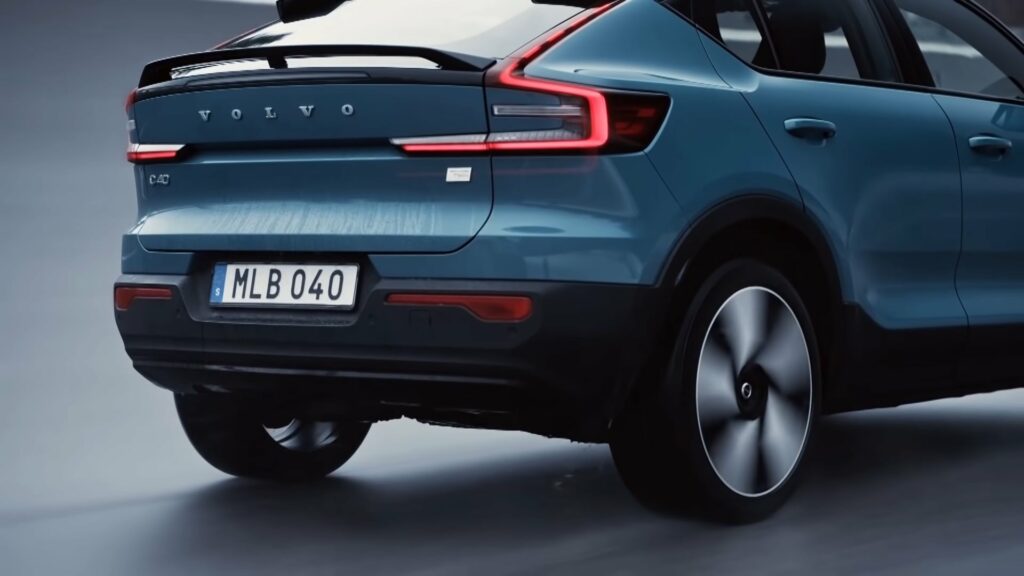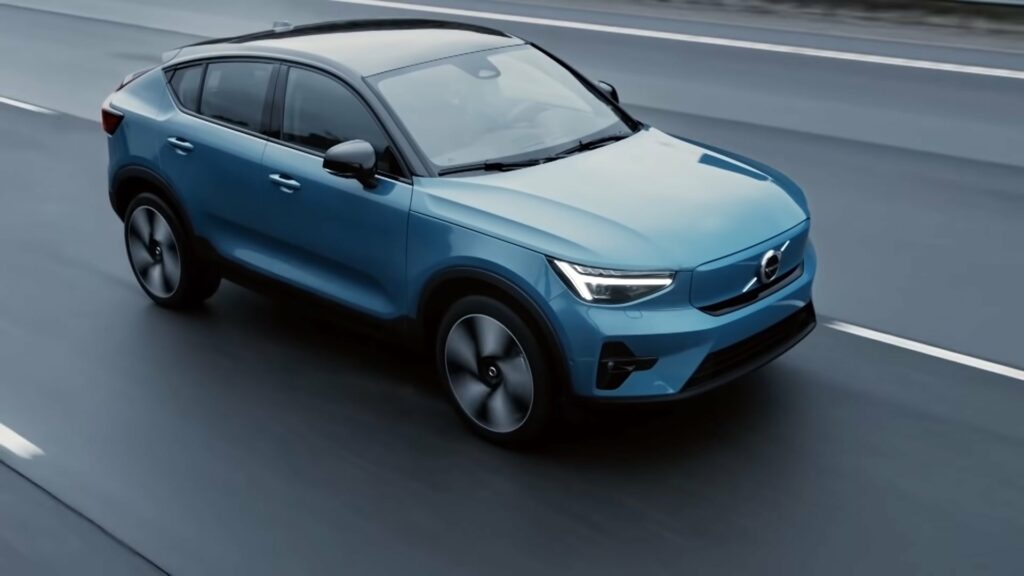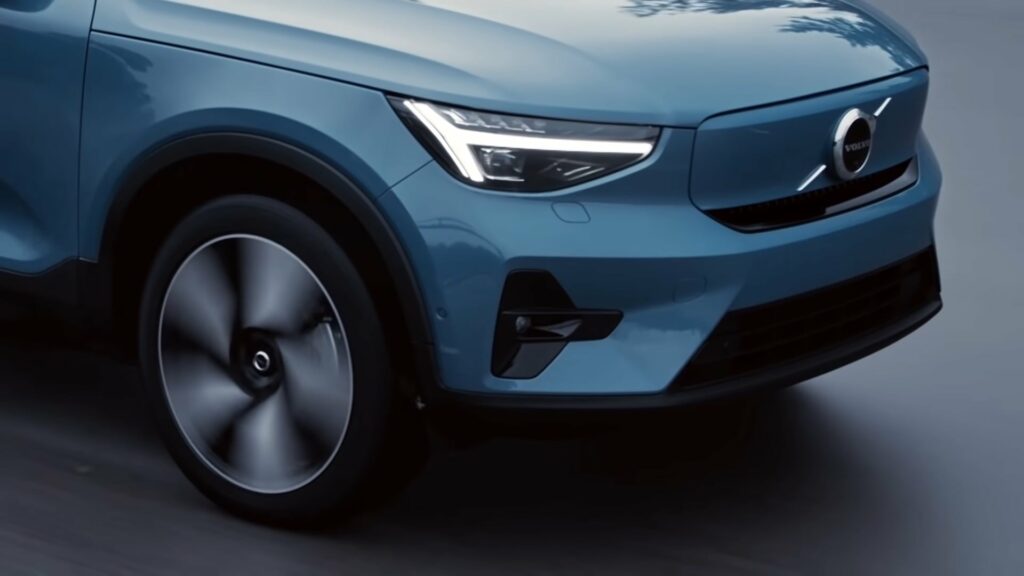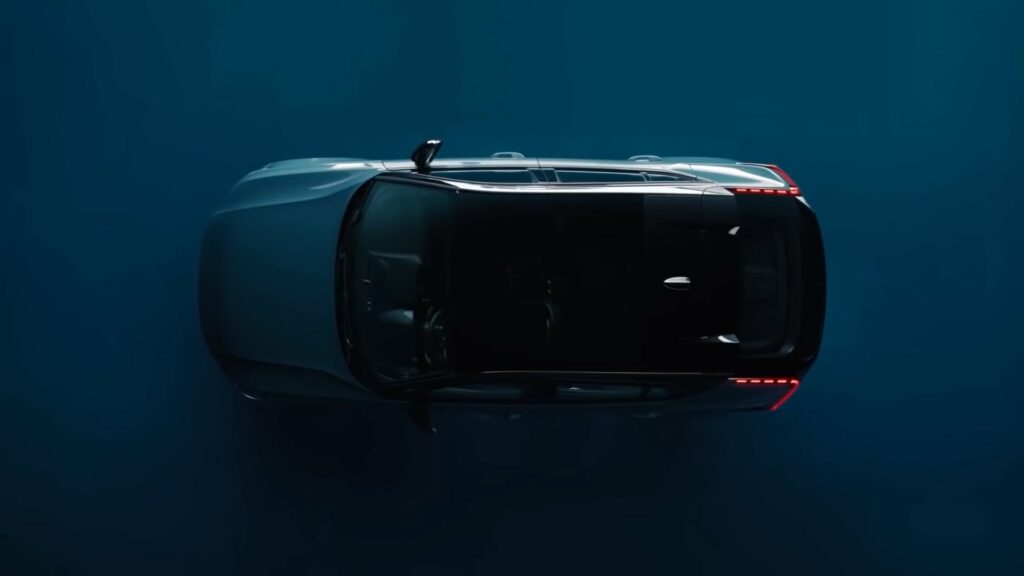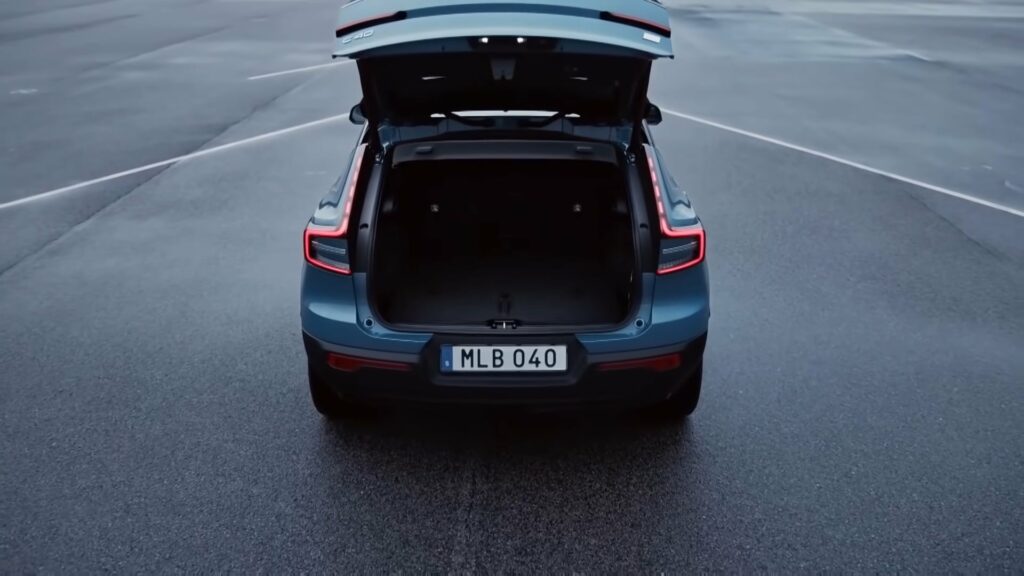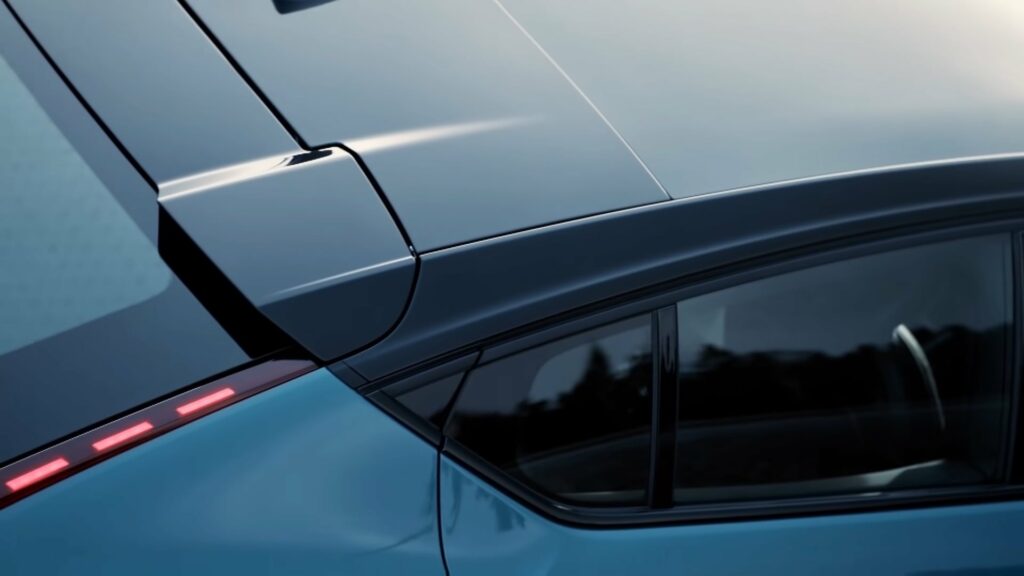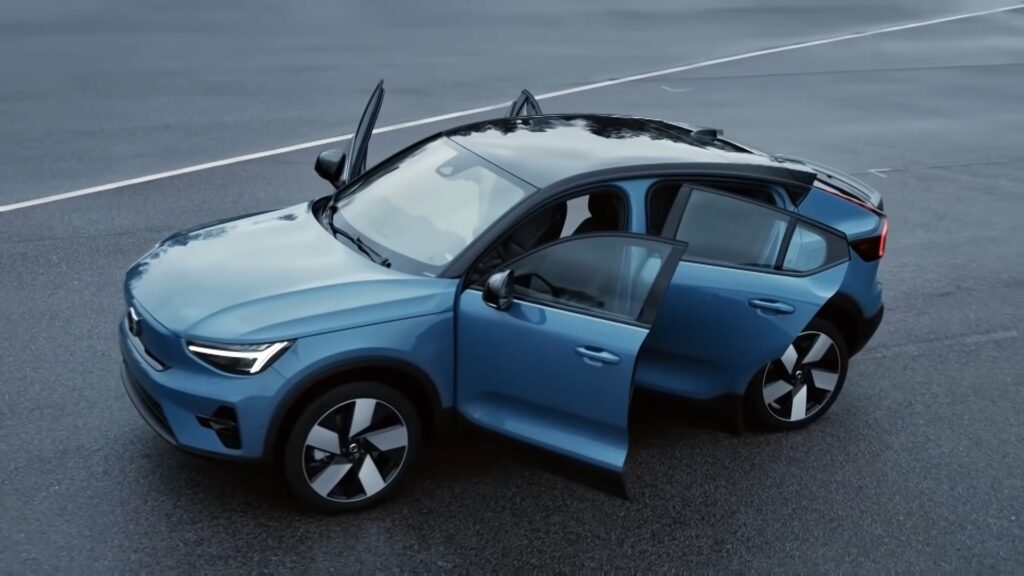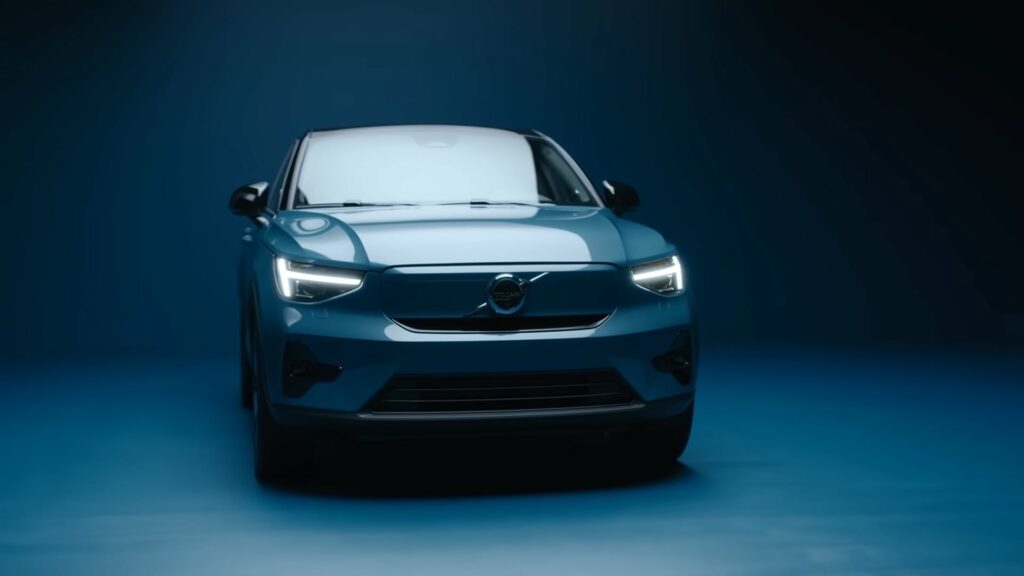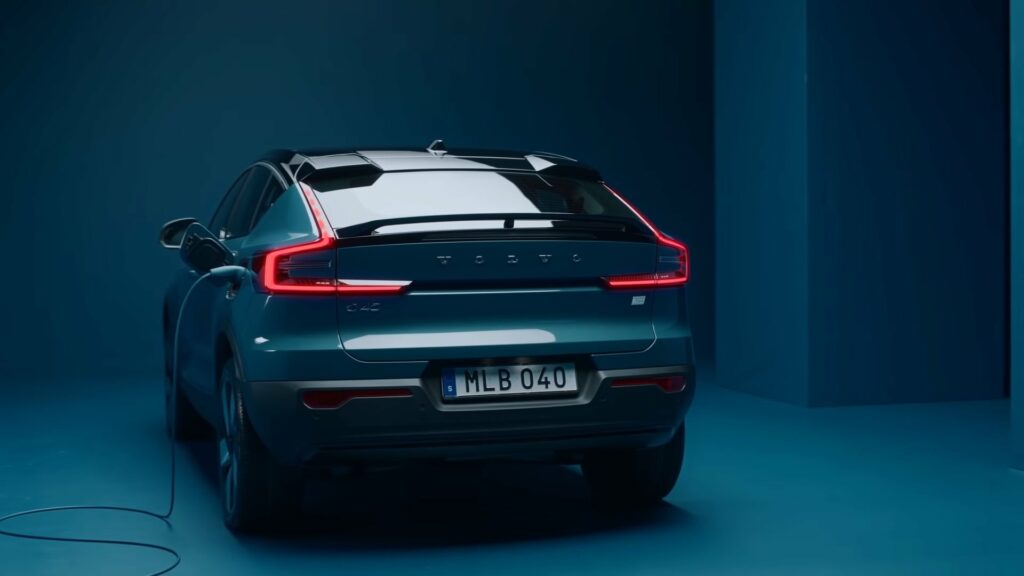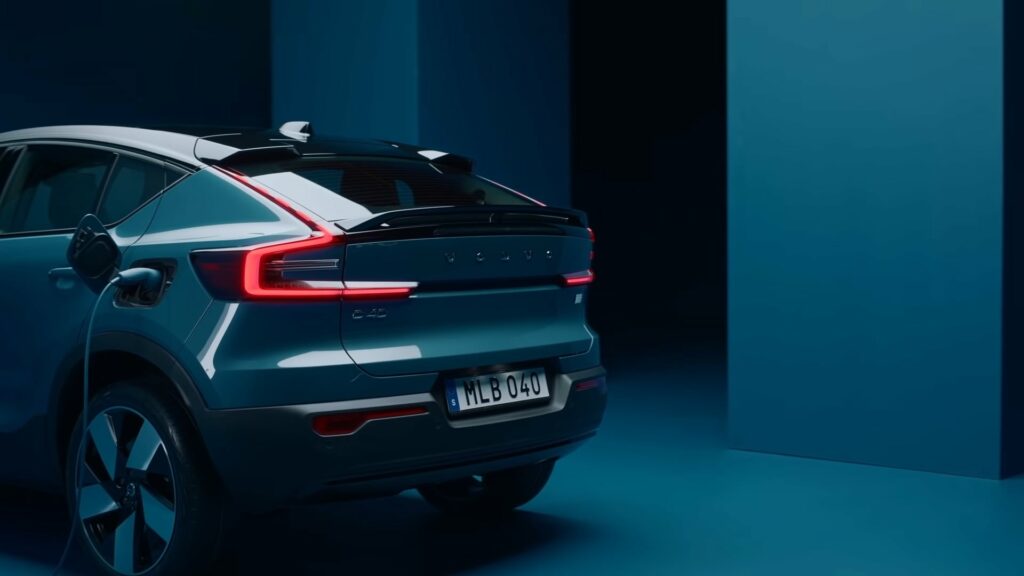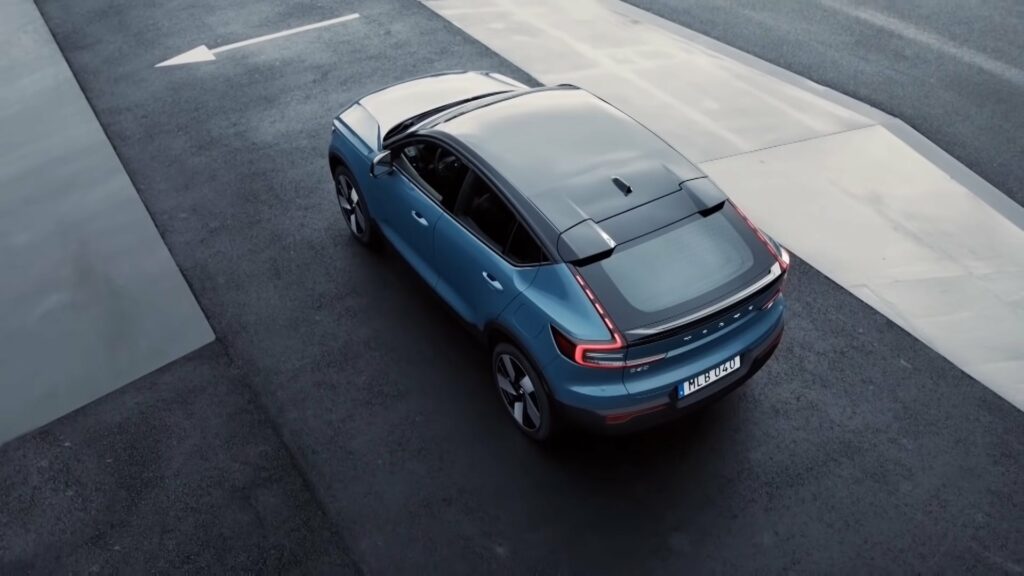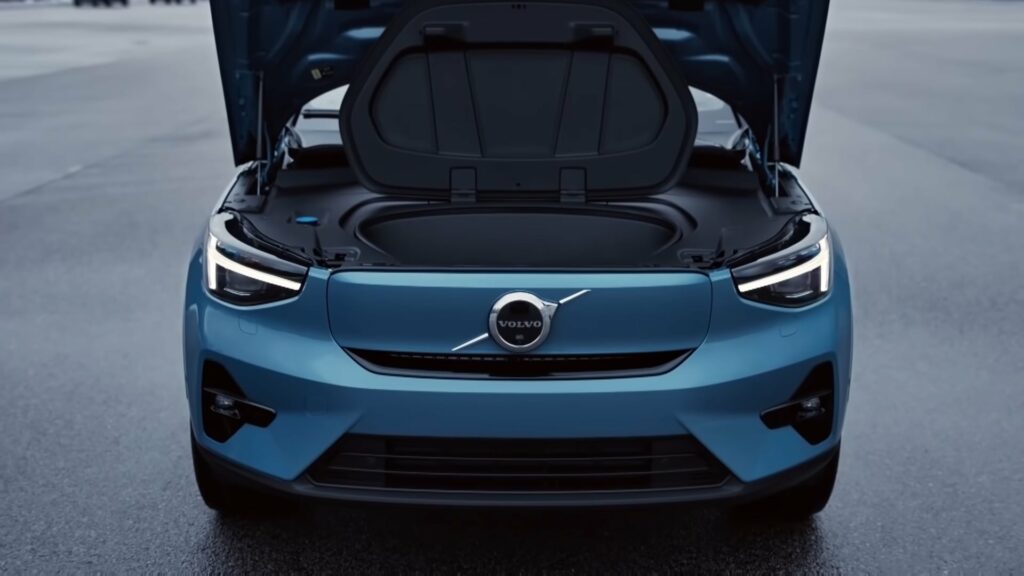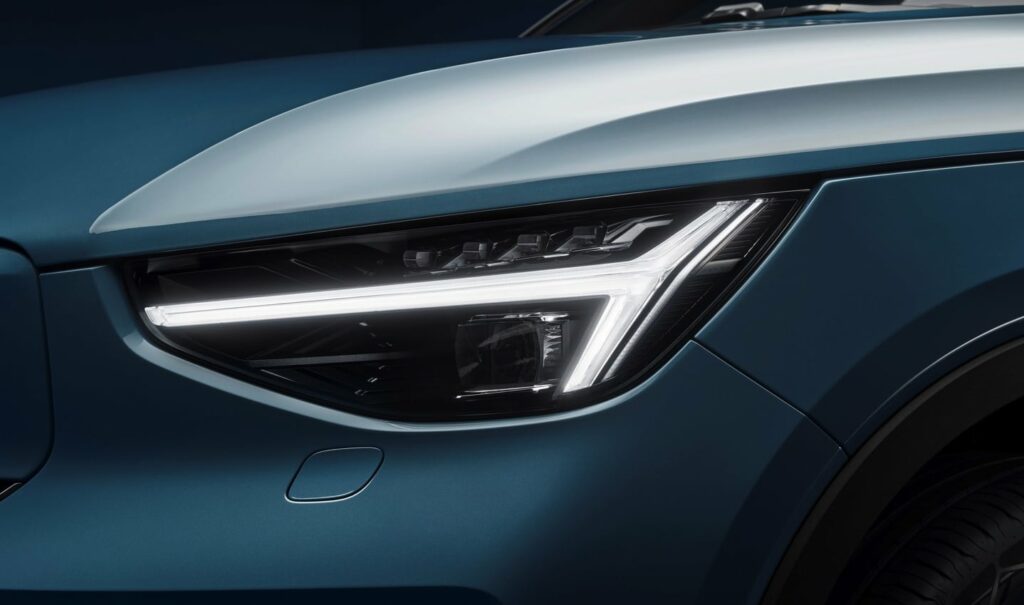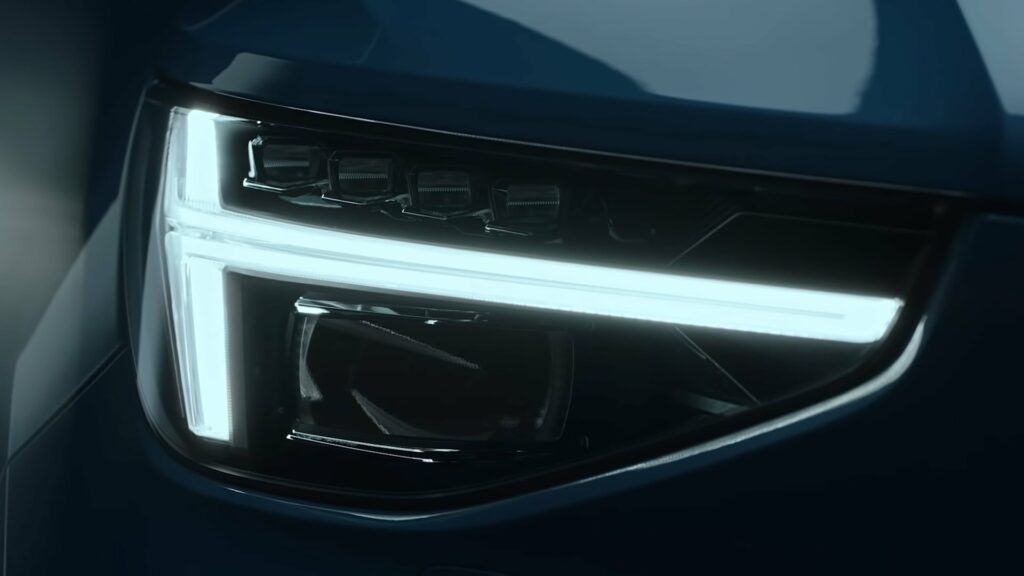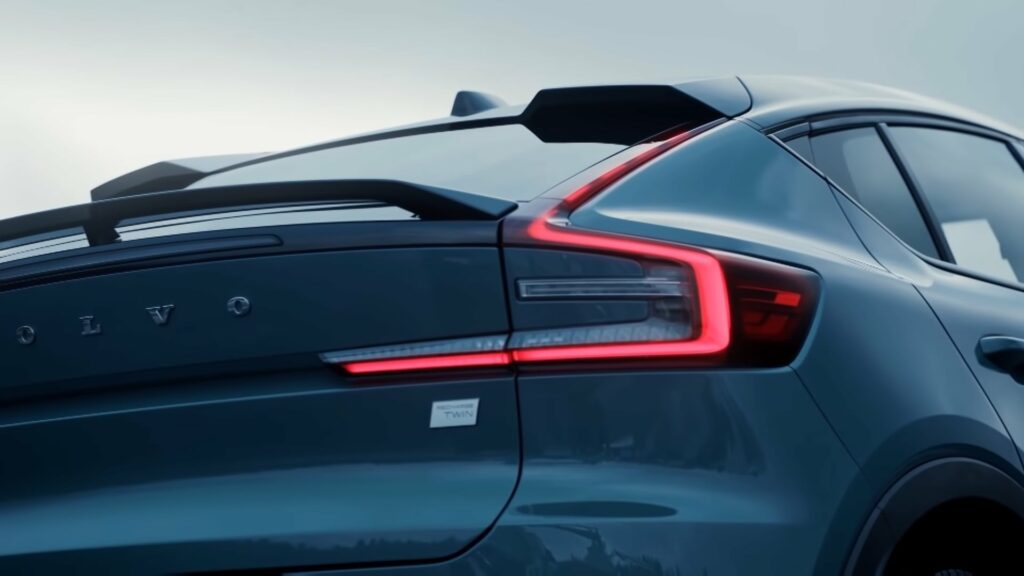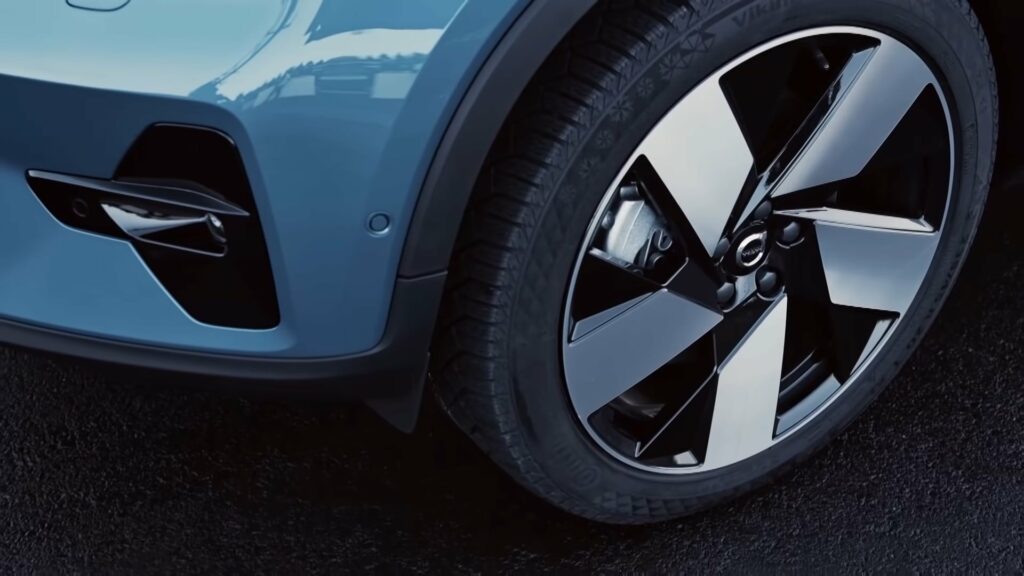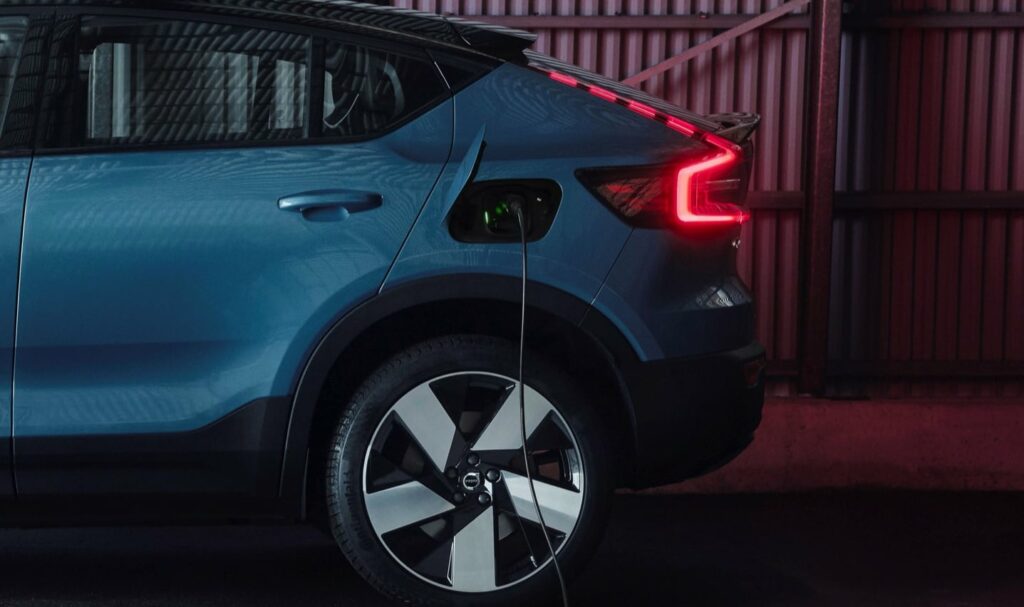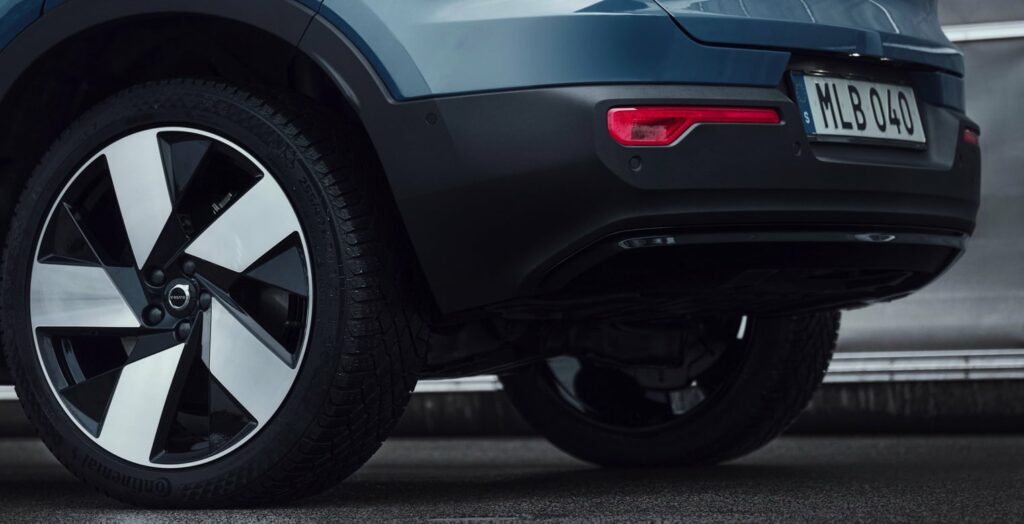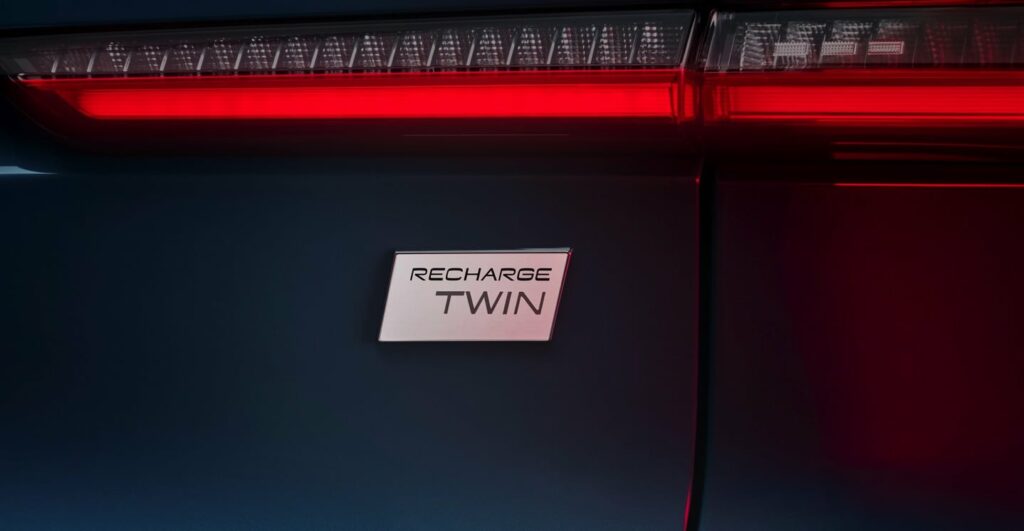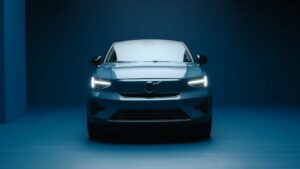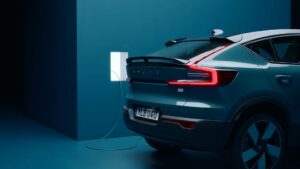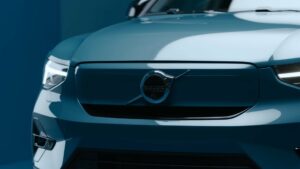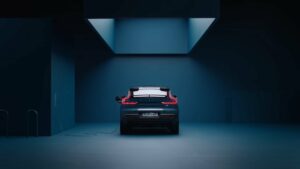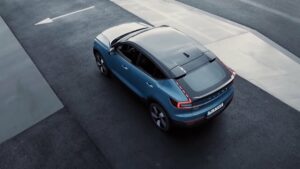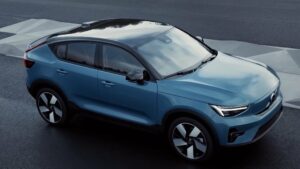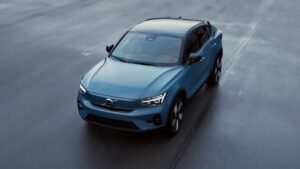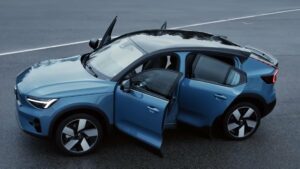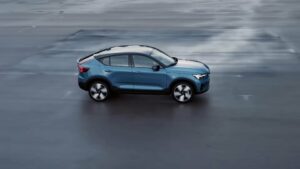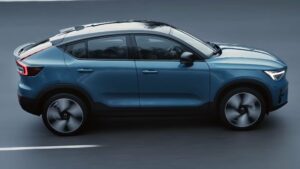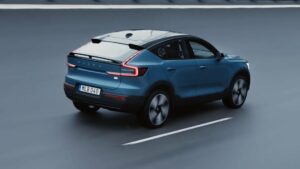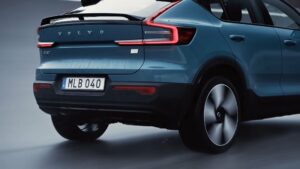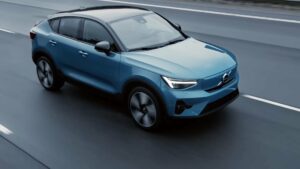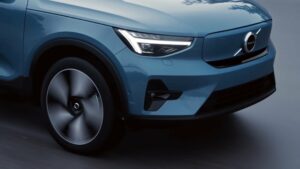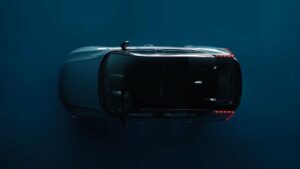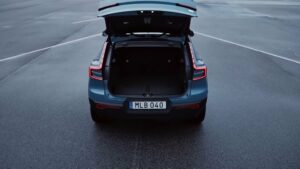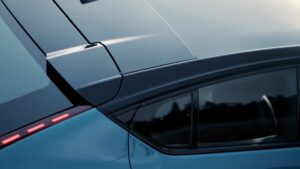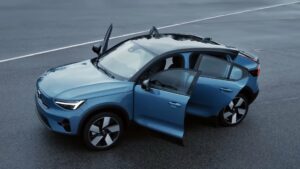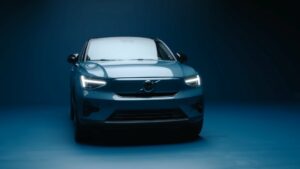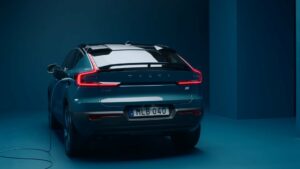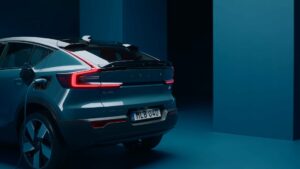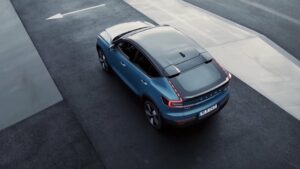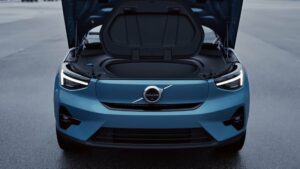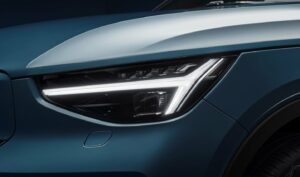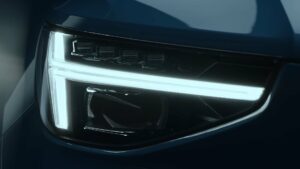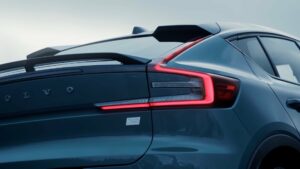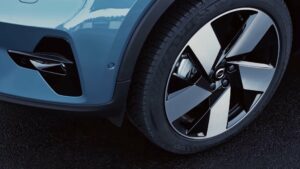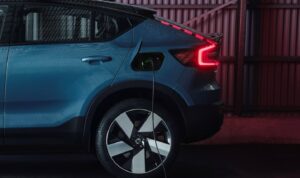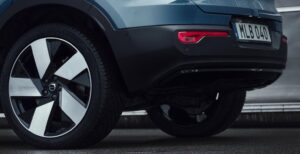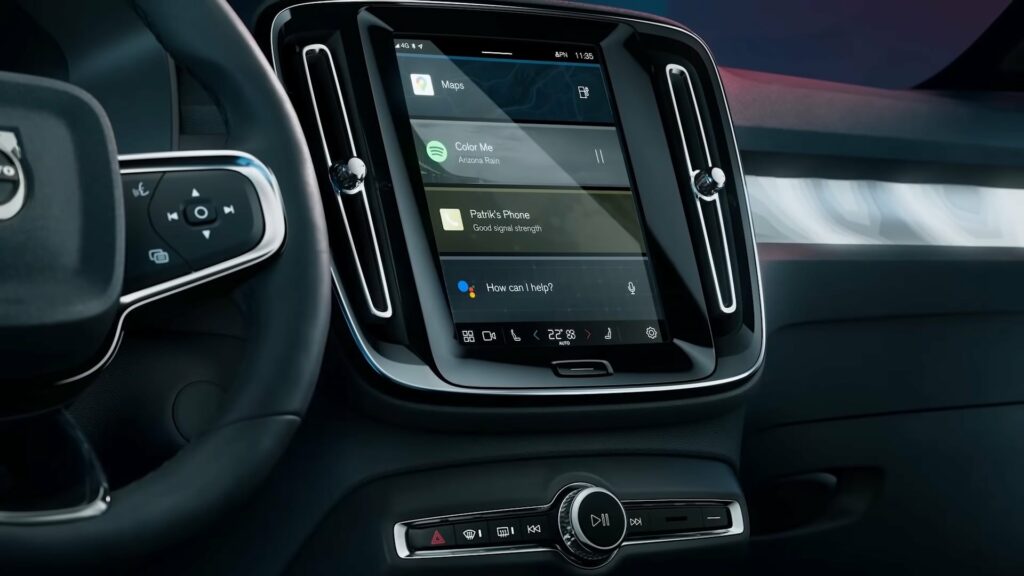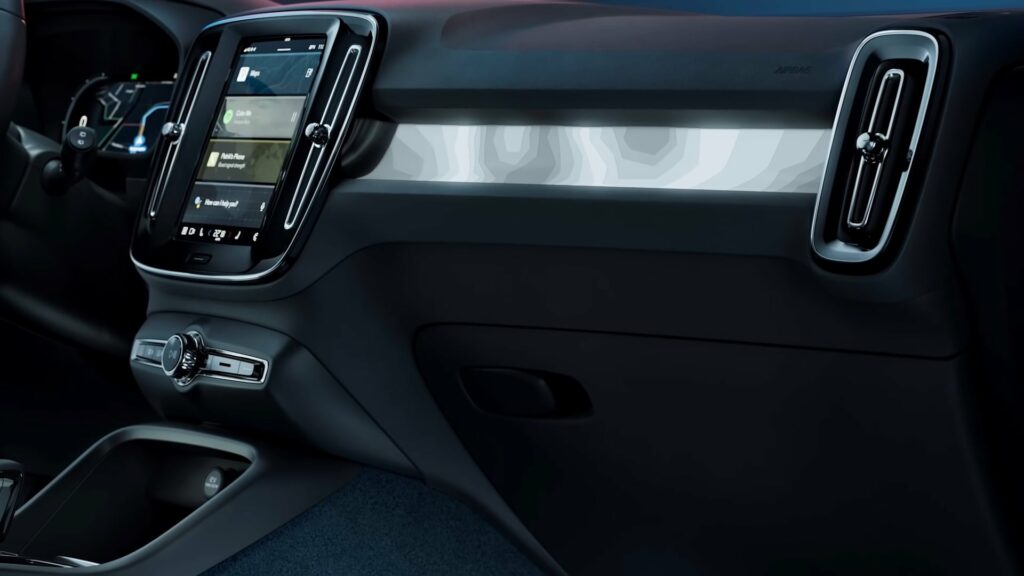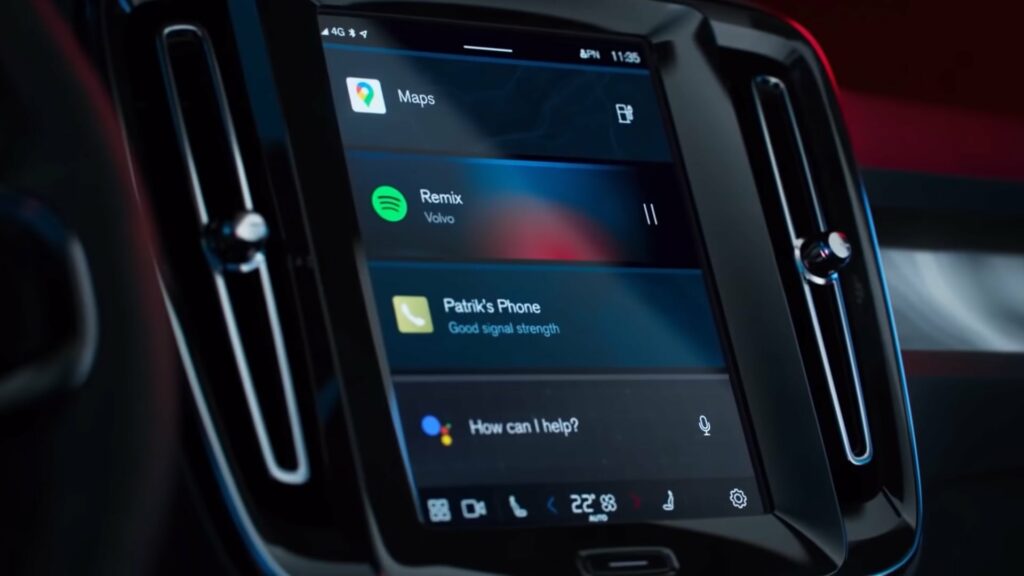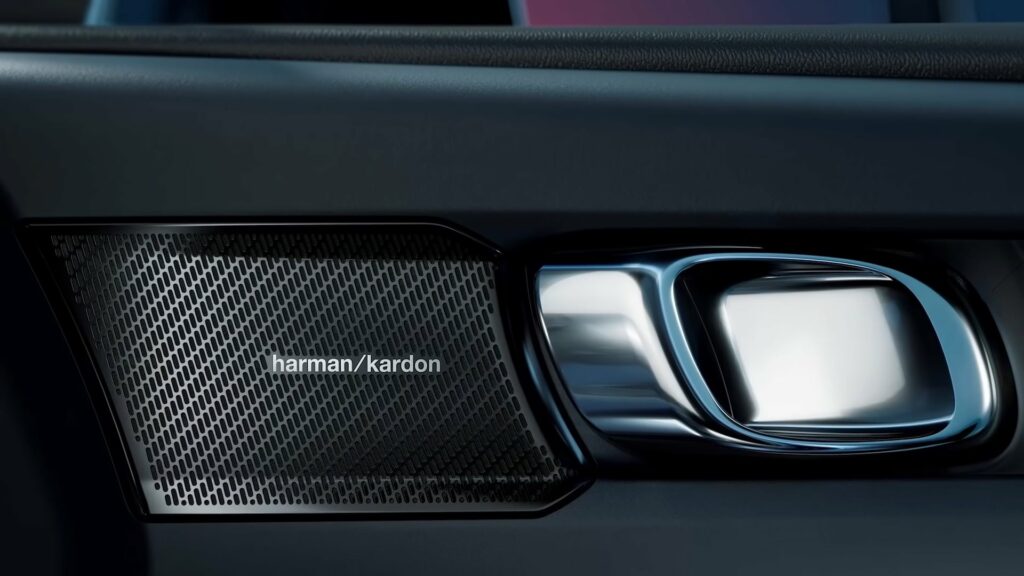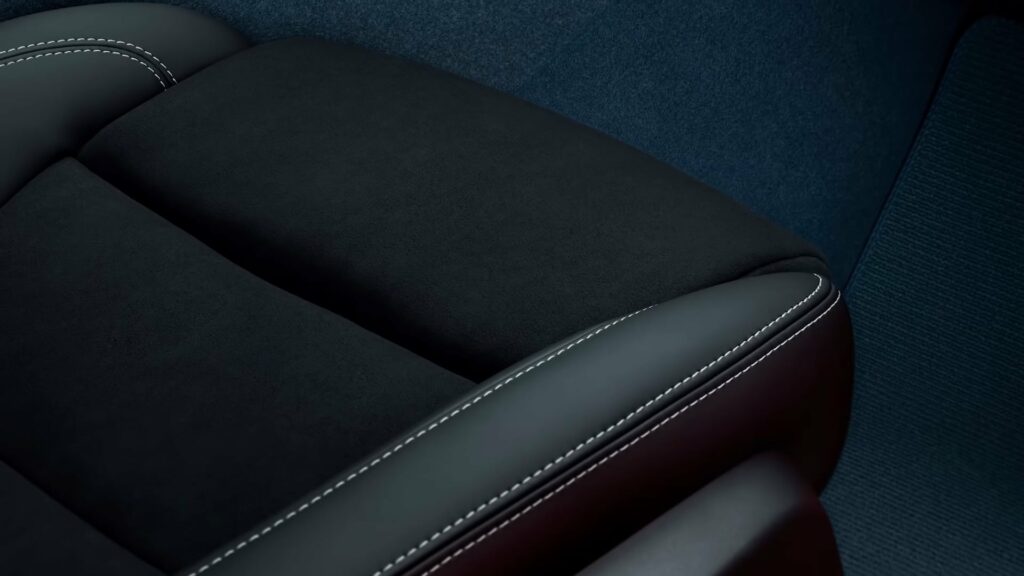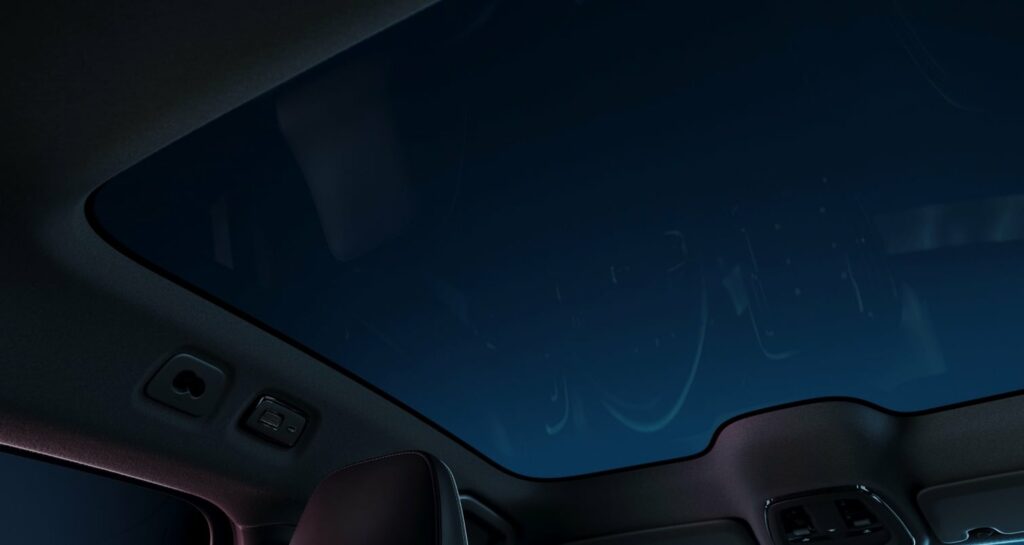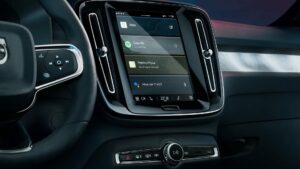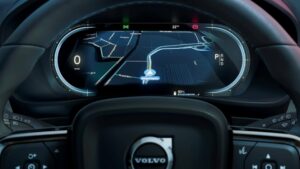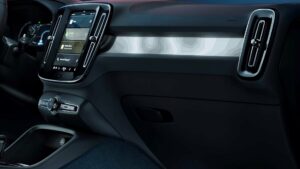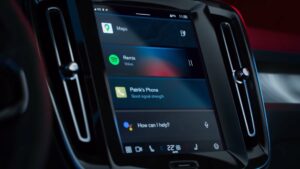Volvo C40 Recharge
The Volvo C40 Recharge is a fully electric crossover SUV that is set to be released in 2022. It is based on the popular Volvo XC40 and is the first Volvo model to be sold exclusively as an electric vehicle.
The C40 Recharge is powered by a 78 kWh battery pack and an electric motor that delivers up to 402 horsepower and 660 Nm of torque. It has a range of up to 340 km on a single charge and can be charged up to 80% in just 33 minutes using a fast charger. The C40 Recharge can accelerate from 0 to 100 km/h (60 mph) in just over 4.7 seconds and has a top speed of 180 km/h.
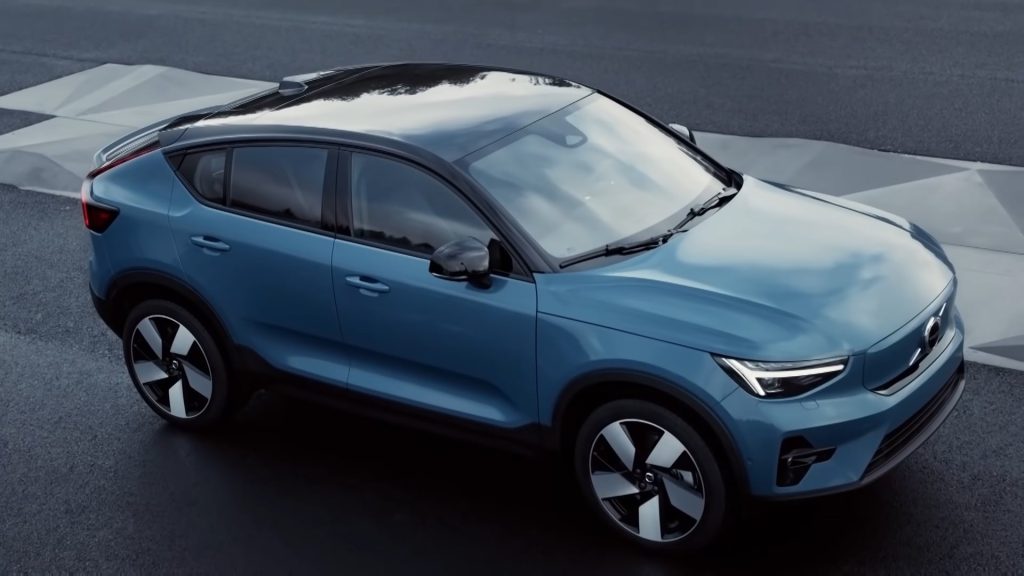
Inside, the C40 Recharge offers a modern and stylish interior, with a range of features, including a 12.3-inch touchscreen infotainment system, wireless charging, and a premium sound system. It also includes a range of safety features, such as lane departure warnings, automatic emergency braking, and adaptive cruise control.
One of the unique features of the C40 Recharge is that it is sold exclusively online, with customers able to configure and order the car through Volvo’s website. This approach is designed to simplify the car-buying process and reduce the environmental impact of car production and distribution.
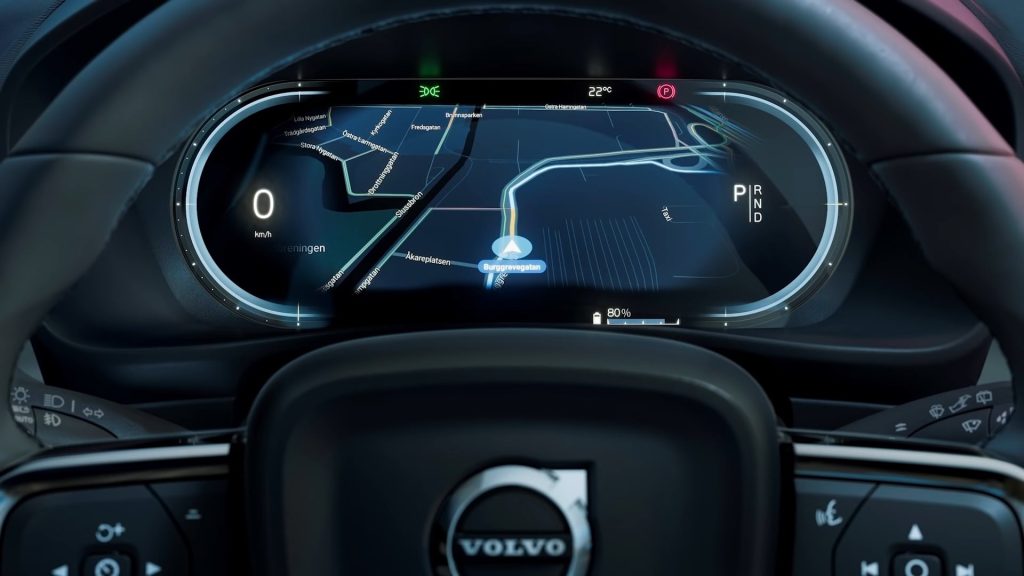
Overall, the Volvo C40 Recharge is a practical and stylish electric SUV that offers a combination of performance, range, and features. It is a good option for buyers who are looking for an electric car that is efficient, practical, and fun to drive. However, it is not yet available for purchase, and pricing information has not been announced.
| Performance | |
| Acceleration 0 – 100 km/h | 4.7 sec |
| Top Speed | 180 km/h |
| Electric Range | 340 km |
| Total Power | 300 kW (408 PS) |
| Total Torque | 660 Nm |
| Drive | AWD |
| Battery and Charging | |
| Battery Capacity | 78.0 kWh |
| Battery Useable | 75.0 kWh |
| Europe | |
| Charge Port | Type 2 |
| Port Location | Left Side – Rear |
| Charge Power | 11 kW AC |
| Charge Time (0->340 km) | 8h15m |
| Charge Speed | 42 km/h |
| Fastcharge Port | CCS |
| FC Port Location | Left Side – Rear |
| Fastcharge Power (max) | 151 kW DC |
| Fastcharge Time (34->272 km) | 32 min |
| Fastcharge Speed | 440 km/h |
| Energy Consumption | |
| EVDB Real Range | |
| Range | 340 km |
| Vehicle Consumption | 221 Wh/km |
| CO2 Emissions | 0 g/km |
| Vehicle Fuel Equivalent | 2.5 l/100km |
| WLTP Ratings | |
| Range | 420 km |
| Rated Consumption | 238 Wh/km |
| Vehicle Consumption | 179 Wh/km |
| CO2 Emissions | 0 g/km |
| Rated Fuel Equivalent | 2.7 l/100km |
| Vehicle Fuel Equivalent | 2.0 l/100km |
|
Rated = official figures as published by manufacturer. Rated consumption and fuel equivalency figures include charging losses.
|
|
|
Vehicle = calculated battery energy consumption used by the vehicle for propulsion and on-board systems.
|
|
| Real Energy Consumption Estimation between 152 – 313 Wh/km | |
| City – Cold Weather * | 214 Wh/km |
| Highway – Cold Weather * | 313 Wh/km |
| Combined – Cold Weather * | 259 Wh/km |
| City – Mild Weather * | 152 Wh/km |
| Highway – Mild Weather * | 250 Wh/km |
| Combined – Mild Weather * | 197 Wh/km |
| Energy use for each trip will vary considerably depending on the driver and the conditions. Therefore, we have provided a range of estimates which can be useful in developing an understanding of the potential benefits of this technology. | |
| Dimensions and Weight | |
| Length | 4431 mm |
| Width | 1873 mm |
| Width with mirrors | 2034 mm |
| Height | 1596 mm |
| Wheelbase | 2702 mm |
| Weight Unladen (EU) | 2202 kg |
| Gross Vehicle Weight (GVWR) | 2620 kg |
| Max. Payload | 493 kg |
| Cargo Volume | 419 L |
| Cargo Volume Max | 1205 L |
| Cargo Volume Frunk | 31 L |
| Roof Load | 75 kg |
| Tow Hitch Possible | Yes |
| Towing Weight Unbraked | 750 kg |
| Towing Weight Braked | 1800 kg |
| Vertical Load Max | 100 kg |
| Miscellaneous | |
| Seats | 5 people |
| Isofix | Yes, 2 seats |
| Turning Circle | 11.4 m |
| Platform | Volvo CMA |
| Car Body | SUV |
| Segment | JC – Medium |
| Roof Rails | Yes |
| EV Dedicated Platform | No |
Home and Destination Charging (0 -> 100%)
A public charging station is required to use the highest possible charging rate. The EVSE/charging station’s charging capacity affects how long it takes to fully charge the battery. The table below shows all possible options for fully charging the Volvo C40 Recharge.
In Europe, plugging an electric car into an outlet is often as easy as plugging it into a household outlet, but there are differences from country to country. The table below shows the different ways to charge the Volvo C40 Recharge, but in some countries some chargers may not be available.
Type 2 ( IEC 62196)

| Charging Point | Max. Power | Power | Time | Rate |
| Wall Plug (2.3 kW) | 230V / 1x10A | 2.3 kW | 38h30m | 9 km/h |
| 1-phase 16A (3.7 kW) | 230V / 1x16A | 3.7 kW | 24 hours | 14 km/h |
| 1-phase 32A (7.4 kW) | 230V / 1x32A | 7.4 kW | 12 hours | 28 km/h |
| 3-phase 16A (11 kW) | 400V / 3x16A | 11 kW | 8h15m | 41 km/h |
| 3-phase 32A (22 kW) | 400V / 3x16A | 11 kW | 8h15m | 41 km/h |
Fast Charging (10 -> 80%)
If you want to enjoy driving an electric car, one of the most important features to consider is the number of miles per hour the car can travel while charged. This is called the “range” of the car. All electric cars have a certain range, even if they are 100% charged. This is because they do not have an internal combustion engine to lean on if you need to drive a long distance.
Max. Power: The maximum power provided by the charging point
Avg. Power: The average power provided by the charging point during a session of 10% to 80%.
Time: the time it takes to charge from 10% to 80%
Speed: the average charging rate during the session of 10% to 80%
Combined Charging System (CCS Combo 2)
| Charging Point | Max. Power | Avg. Power | Time | Rate |
| CCS (50 kW DC) | 50 kW | 45 kW | 74 min | 190 km/h |
| CCS (100 kW DC) | 100 kW | 80 kW | 41 min | 340 km/h |
| CCS (150 kW DC) | 150 kW | 100 kW | 33 min | 430 km/h |
| Brand | Volvo |
| Model | C40 Recharge |
| Body Style | SUV |
| Car Engine | electric |
| Motor power | 300 |
| Maximum Torque, Nm | 660 |
| Battery Energy, kWh | 78.0 |
| Power reserve (NEDC/EPA/WLTP), km | - / - / 340 |
| Level Charging (230/400/DC), hours | - / 8.15 / 0.33 |
| Electrical Acceleration, 0-100 km/h (0-62.1 mph) in sec | 4.7 |
| Top Speed, km/h | 180 |

